Griha pravesha homas two days
| House warming ceremony (griha pravesha) is a great event in one’s life. The owner of the house not only builds the house but also builds so many aspirations which he wants to achieve in the new house. To achieve this all negative energies to be removed from the house and positive energy to be filled in.
New house warming (Grihapravesha) ceremony pooja is the set of Homas and Poojas with family rituals performed before to live at home. It is the process of removing negative energy (evil spirits) occupying the house called Bhoota, preta, pishacha, shakinee, dakinee etc. Purifying the new house with homas and Poojas with Vedic mantras it makes Peaceful to live. |
|
| Be ready with these basic materials | Navagraha Homa package includes |
| Lamp (Deepam) – 2, Bricks – 50, Sand – 10 Kg, Mango leaves – 10 Bunch, Garlands for neck (Optional), Garland for entrance, Trays -5, Vessels with stove for prasadam- 3 Asanam to sit – 5 | Patashala certified Purohits – 3+4
We bring All Homa/Pooja materials Travelling charges extra |
Griha Pravesha Homas for two days
( Vastu and rakshoghna homas first day night – Ganapathi and Navagraha homa Next day morning )
House warming ceremony (griha pravesha) is a great event in one’s life. The owner of the house not only builds the house but also builds so many aspirations which he wants to achieve in the new house. To achieve this all negative energies to be removed from the house and positive energy to be filled in.
New house warming (Grihapravesha) ceremony pooja is the set of Homas and Poojas with family rituals performed before to live at home. It is the process of removing negative energy (evil spirits) occupying the house called Bhoota, preta, pishacha, shakinee, dakinee etc. Purifying the new house with homas and Poojas with Vedic mantras it makes Peaceful to live.
Due to building of a house, 3 types of doshas (sins) come up. 1. Digging the earth (Bhoo khanana) because of this many worms will die. 2. Cutting of wood (Daru chedana) Nature is getting affected. Because the Trees also living beings in the lower end of the life spectrum. 3. Breaking of stones (Pashana bhedana) There is possibility of evil spirits in the stones. By performing this homa these three doshas removed by vastu shanthi homa
punyaha vachanam, panchagavya, sapta shudhi, (purifying the house by doing sum rituals). Some people do Go pooja (Pooja to cow and calf) in the evening also. Rakshoghna hom with sudarshana or aghora homa followed by Vastu homa in the night.
On the auspicious day morning Poojas starts with go pooja (Pooja to cow and calf). We decorate our house main entrance and do dwara lakshmee pooja. In the auspicious time we enter the new house by holding Poorna kumbha, God photos, idles, lamp (Deepm), provisions, Milk with new vessel, and mangala dravyas. At first we boil milk and offer it to our kula devata and destitute to all our family members. Ganapati homa, Navagraha homa, vastu homa, lakshmee sudarshana homas also be done.
What are the benefits of Gruha pravesha Homa?
- spiritually cleanses the negative energys
- removes the ill-effects and Doshas,
- Protects occupants from all kinds of troubles.
- Increases positivity in the surroundings
- Protection for entire family by removing struggles.
- Brings health, wealth, happiness and prosperity.
- Welfare of our family and Peaceful to live.
- Quickness in action and work.
- Increases family bondage.
- Peace of mind at home.
Griha pravesh tips to enter a new house,
- Fix an auspicious date and time to enter a home. It will bring good luck and prosperity.
- The house construction work should be fully finished before doing the griha pravesh. The roof, doors, windows and other fittings should be complete, before entering to new house.
- House warming ceremony must be done when the new house is ready for live.
- The main door should be decorated with mango leaves and flowers garlands.
- Draw colour rangoli in frontofthe main entrence. Significance of rangoli is inviting the god or goddess.
- Make a Pooja room in the North east corner for the
Which auspicious things to be taken in to house during the Griha pravesha?
Ghee lamps, God idols or photos, Flower decorated Kalash filled with water and mango leaves and coconut placed above it. Pooja items, Milk with boiling vessel, Thamboolam, fruits, Turmeric roots and powder, Kumkum, Grains, Salt chilly, Tamarind, rice bag, coconut, cash and coins, and important house hold items.
Which homas and poojas performed in the Grihapravesha?
Go (cow and calf) Pooja, Dwara lakshmee Pooja, Kuladevata pooja, Ganapathi homa (To remove all obstacles), Navagraha homa (Nine planets), sudarshana homa, Vastu shanti homa and Lakshmi pooja also be done.
Sum eople do Satyanarayana Pooja (welfare of the family) also with these homas.
When should I perform Grihapravesha Homas?
It is performed on an auspicious day (Muhoorta day) with good lagna. Tarabala suitable nakshatra of the Wife as primary and the husband’s as secondary
What are the (materials) Homadravyas offered in Griha pravesha Homa?
Homa Ahuti dravyas (materials) differs based on homas.
Cow’s ghee, Ashtadravya, Doorva grass, samit, Boiled rice
Tilavreehi, White mustardand, sesame and other herbs also used in the homa.
What are the mantras chanted during Griha pravesha Homa?
Ganapati moola mantra, malamantra, sookthas, Navagraha sooktham, Vastu devata mantras, Sudarshana mantras, Lakshmi mantam, Shree sooktham, Shanti mantras also chanted during the homa.
What are the special naivedyam (Prasadam) for Griha pravesha Homa?
Ashta dravya, Shudhannam, Apoopam (Appam), Payasam, Gudannam, Sugarcane, Fruits: Pomegranates, Guava, Banana and all other fruits.
Which danas given in Griha pravesha Homa?
Ashta dravya dana, Navagraha Danyas (Nine Seeds), Kalasha dana, Phala Tamboola dana, Ajya dana,
Vastra dana, Annadanas also given.
What are the rituals included in Griha pravesha Homa?
1st day night Vastu and Rakshoghna Homas
- Prarthana anujna: (Getting the blessings of elders and veda pandits)
- Sankalpam (The prayer, asking the needs to god or purpose of the homa.)
- Ganapathi Pooja: (to remove all obstacles)
- Shudhi Punyaha Vachanam: The Purification ritual (the ritual performed before the ceremony for the purification of the body, place, and pooja materials, Shudhi (purification) Mantras are chanted then mantra purified water is sprinkled over all the people participating and the items.)
- Acharya varanam: (Appointing the pandits to do homam or giving power of attorney to perform homas.
- Gopooja: Worshiping cow and calf (Kamadhenu) at the house entrance. After the pooja the cow and calf enters the house at first.
- Kalasha sthapanam,Pranapratishta: (Kalasha pooja and mandala pooja invoking /calling the divinity (Navagraha) or among the gods. hymns and mantra are recited to invite the deity to be resident guest) Navagraha Pooja is done in Navadhanya (Nine type of seeds) on navagraha yantra. Different color cloths.
- Kalpoktha Shodashopachar pooja: (16 types of Worshiping method of Deity)
- Ashtothara or sahasranama archana: (offering flowers or kumkumam by chanting names of god )
- Kalasha Japam: (Reciting moola mantras and veda sookthas.)
- Pradhana homam: (Offering the ghee, samit, annam, and other dravyas to the honan,)
- Vastu bali: Vaasthu Mandalam, Vaasthu devathas are invoked and piece of Pumpkin with Laja, Anna (boiled rice.) are offered to them asa bali.
- Poornahuti homam:(Coconut banana, herbs and other auspicious materials are Offering to agni)
- Maha naivedyam: (Offering Foods, fruits and other eatable items to god)
- Maha mangalarati: ( Decorated ghee lights and camphor lights are offered by showing around the god )
- Kalasha Abhisheka or Prokshanam: (Giving Mantra purified Kalasha whater to Divine bath or sprinkled over all the participating people by chanting Veda mantras.)
- Teertha prasada: (Pooja kalasha water given to drink as teertha. offerd naivedya items are distributed.)
2nd Day Morning Homas and poojas
Dwara pooja Pooja performed in the main entrance. The Mahalakshmi and dwara devatas resides in the threshold of the main
- Entering the house: Wife enters house carrying a pot full of water by placing her right feet first. Husband follows her with God Idols and photo. Children enter with the mangala dravyas and grocery items. Relatives enter with all pooja items and important house hold items.
- Boiling milk: Significance of overflowing boiled milk would ensure that our home will overfilled with wealth, health and happiness.
- Ganapathi Pooja: (to remove all obstacles)
- Sankalpam (The prayer, asking the needs to god or purpose of the homa.)
- Acharya varanam: (Appointing the pandits to do homam or giving power of attorney to perform homas.
- Kalasha sthapanam,Pranapratishta: (Kalasha pooja and mandala pooja invoking /calling the divinity (Navagraha) or among the gods. hymns and mantra are recited to invite the deity to be resident guest) Navagraha Pooja is done in Navadhanya (Nine type of seeds) on navagraha yantra. Different color cloths.
- Kalpoktha Shodashopachar pooja: (16 types of Worshiping method of Deity)
- Ashtothara or sahasranama archana: (offering flowers or kumkumam by chanting names of god )
- Kalasha Japam: (Reciting moola mantras and veda sookthas.)
- Pradhana homam: (Offering the ghee, samit, annam, and other dravyas to the honan,)
- Poornahuti homam:(Coconut banana, herbs and other auspicious materials are Offering to agni)
- Maha naivedyam: (Offering Foods, fruits and other eatable items to god)
- Maha mangalarati: ( Decorated ghee lights and camphor lights are offered by showing around the god )
- Kalasha Abhisheka or Prokshanam: (Giving Mantra purified Kalasha whater to Divine bath or sprinkled over all the participating people by chanting Veda mantras.)
- Asheervadam:(Getting the Blessings of Veda Pandits and elders by chanting Asheervada Mantras)
- Teertha prasada: (Pooja kalasha water given to drink as teertha. offerd naivedya items are distributed.)
- Staying: The house owner with family should stay overnight at home.
Be the first to review “Griha pravesha homas two days” Cancel reply
Related products
Combo Homa packages
Combo Homa packages
Combo Homa packages
Combo Homa packages
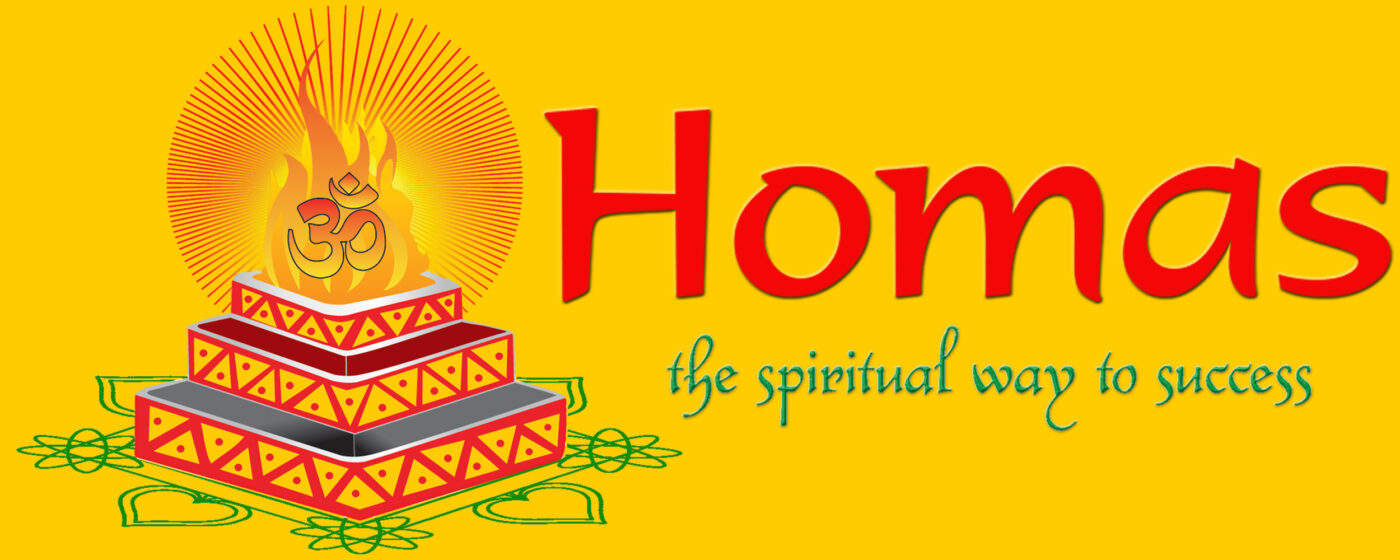
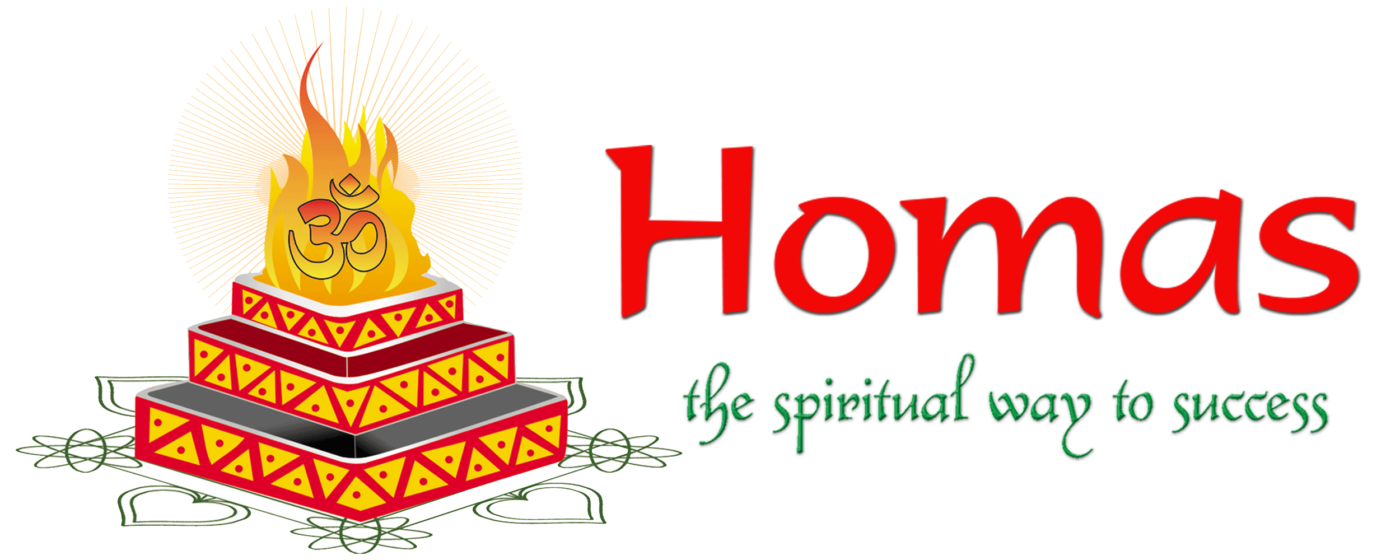






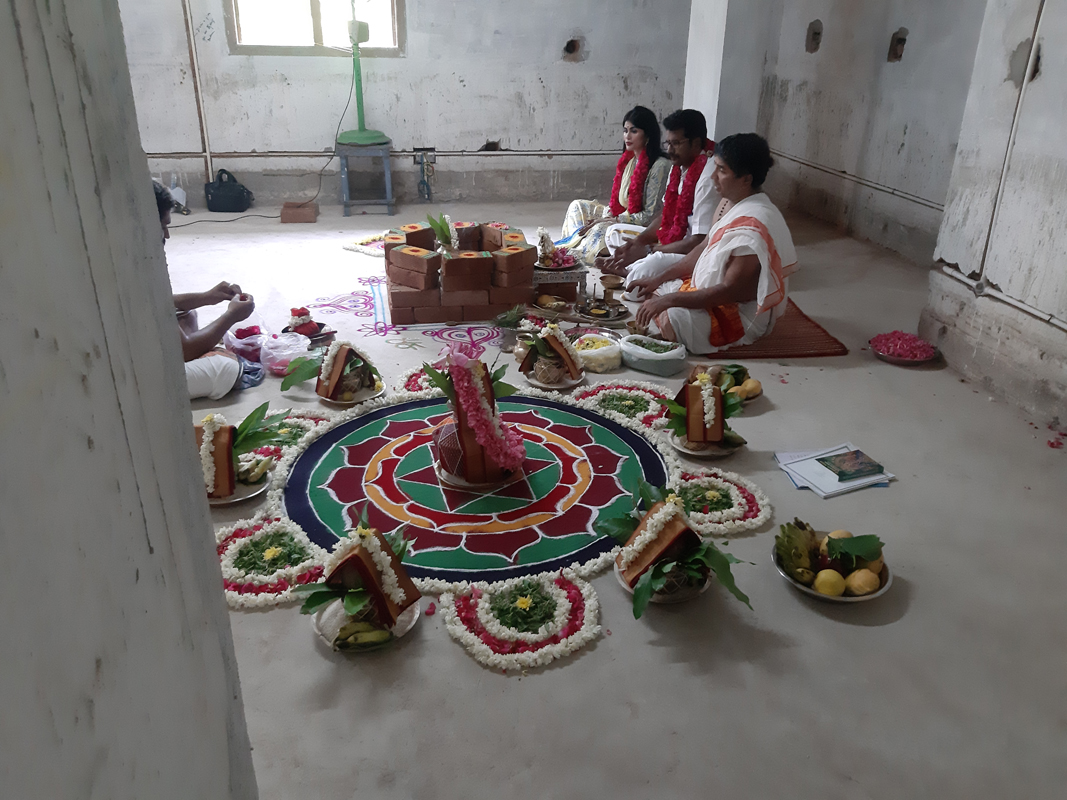
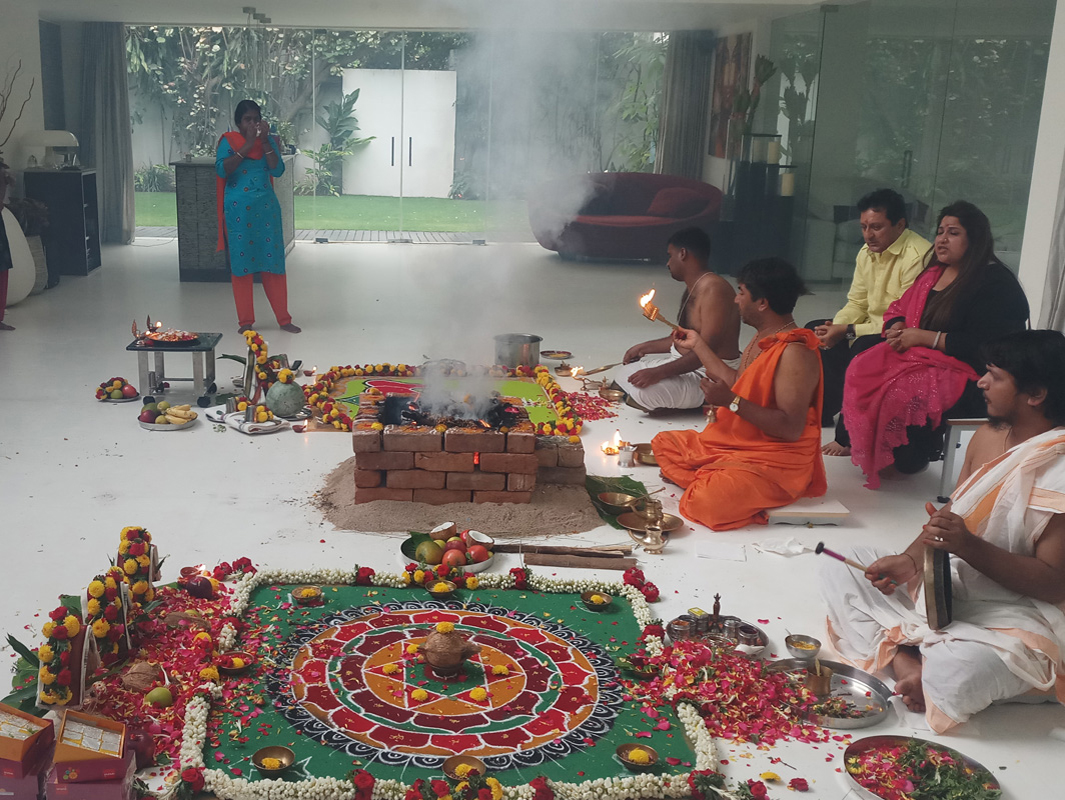
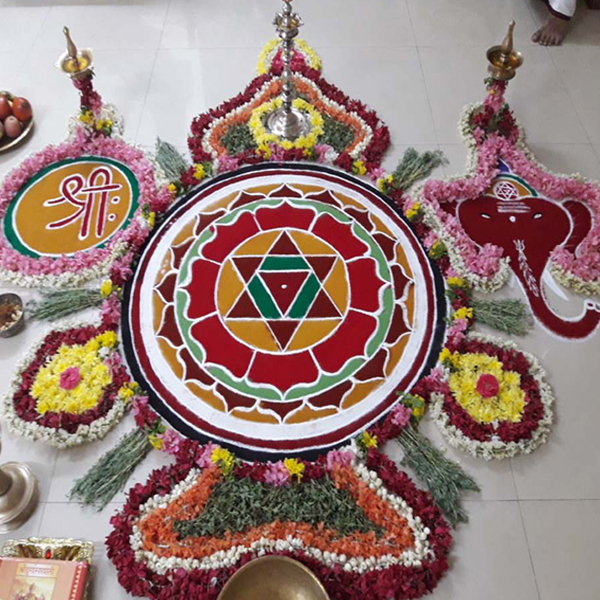






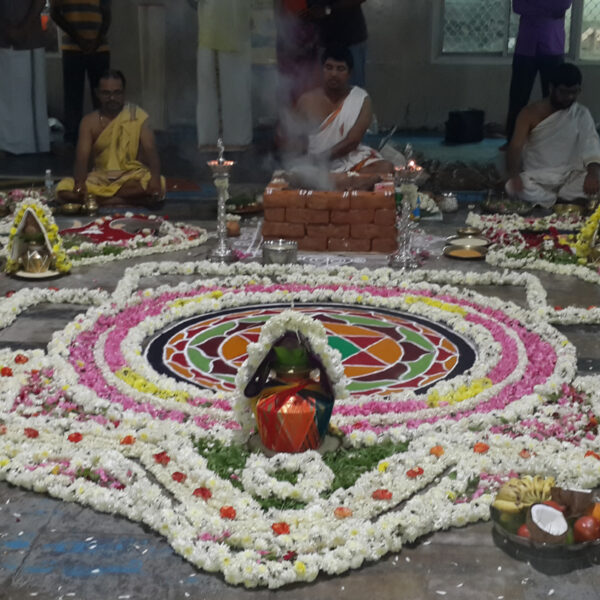

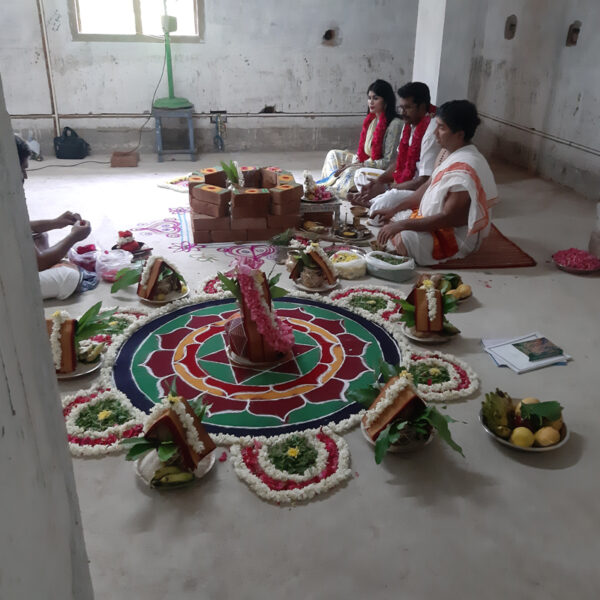
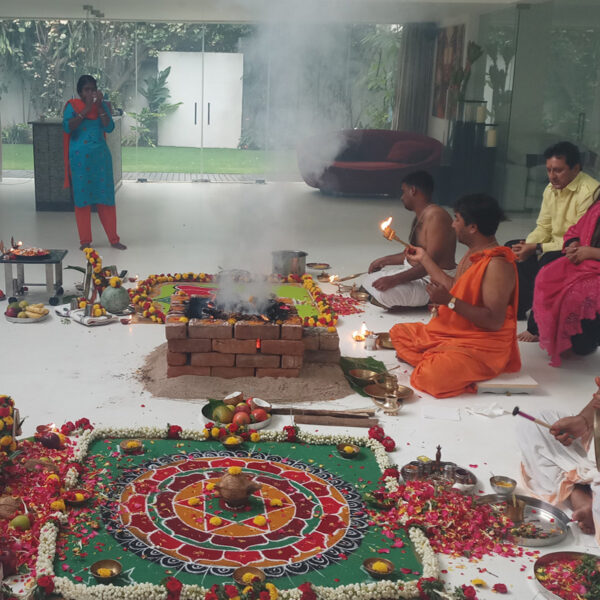

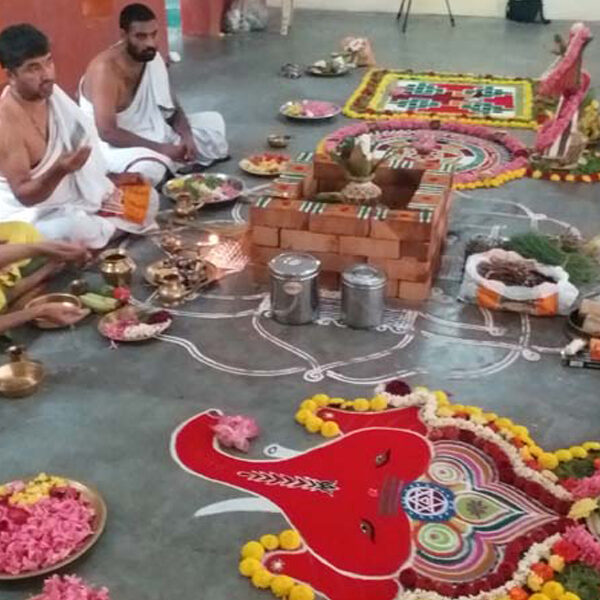
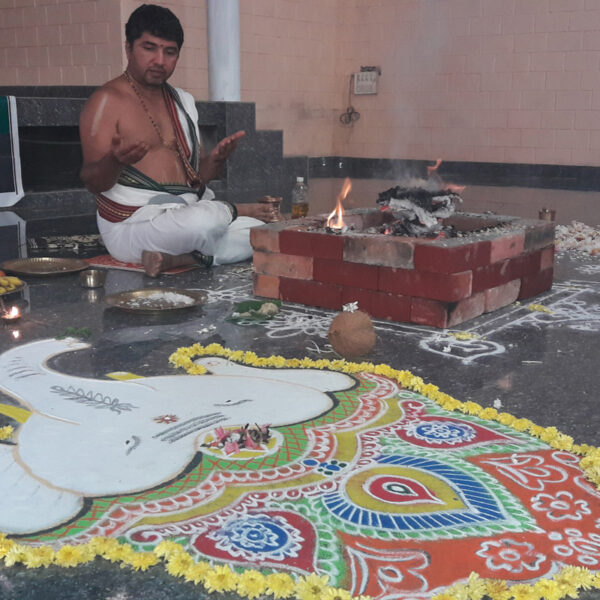
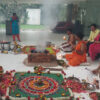

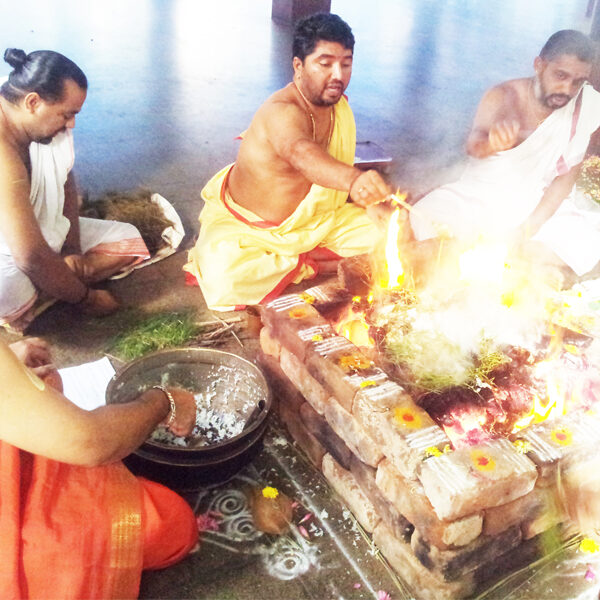

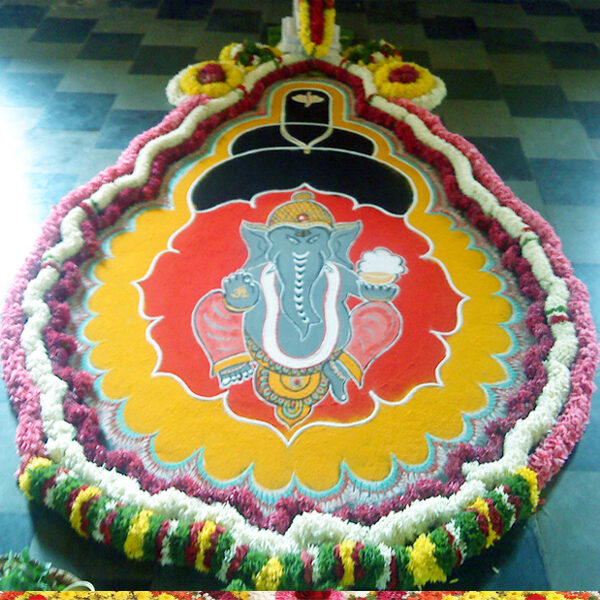


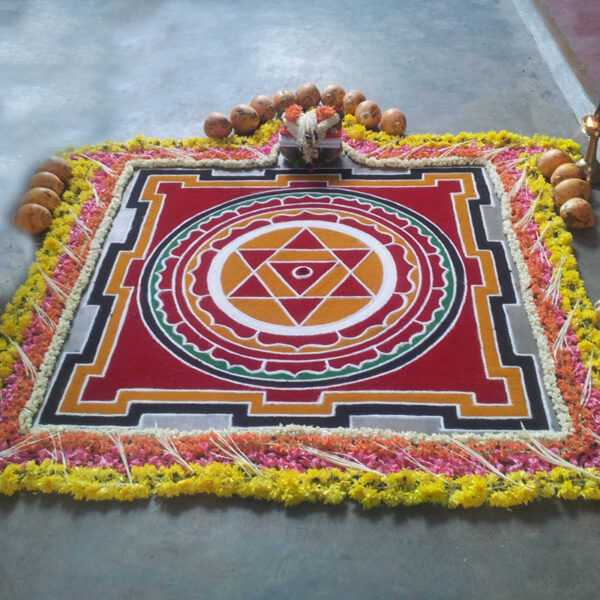


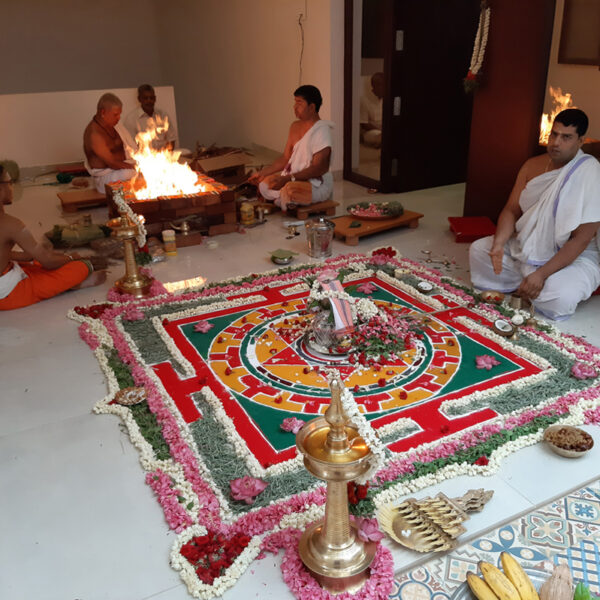
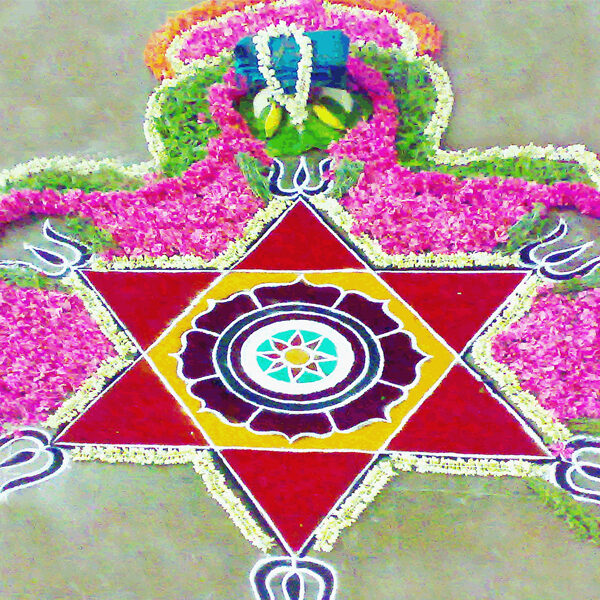

Reviews
There are no reviews yet.